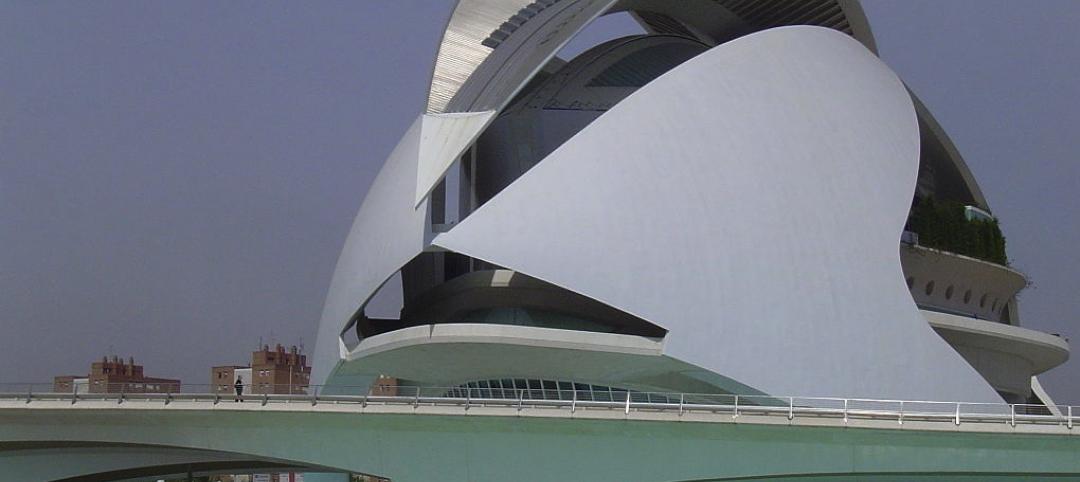 |
|
Memorial Hall’s famed 60-foot dome and granite façade were restored as part of an $88 million adaptive-reuse project for the Please Touch Museum. |
Built in 1875 to serve as the art gallery for the Centennial International Exhibition in Fairmount Park, Memorial Hall stands as one of the great civic structures in Philadelphia. The neoclassical building, designed by Fairmount Park Commission engineer Hermann J. Schwarzmann, was one of the first buildings in America to be designed according to the principles of the Beaux Arts movement. Its signature design, highlighted by an iron-and-glass dome adorned with a 23-foot-tall statue of Columbia, has been emulated by architects across the globe, including those of the Art Institute of Chicago, the Milwaukee Public Museum, the Brooklyn Museum, and the Detroit Institute of Art.
Despite its celebrated past and prominence in the worldwide architecture community, by the 1950s years of delayed maintenance and neglect had left Memorial Hall in dire need of restoration. The situation was exacerbated by a revolving door of tenants that included an industrial arts school, an art museum, a recreation center, a sound recording studio, even a police station. In 2000, the building had to be closed to the public.
In 2002, Memorial Hall received a much-needed jolt when the Please Touch Museum finalized plans to relocate there. The $88 million restoration and adaptive-reuse project took nearly six years from concept through construction, which concluded with the grand opening on October 18, 2008. The project entailed a complete restoration of the exterior granite façade, the 60-foot dome, and all interior paint, plaster, and marble—as well as construction of an addition that houses the museum's cherished, hundred-year-old Woodside Park Dentzel Carousel.
The team cleverly adapted the existing spaces for the exhibits and museum functions. An indoor swimming pool added in 1962 presented the perfect location to “plant” a soaring artificial tree for the Alice's Adventures in Wonderland exhibit. A dark, decrepit maintenance tunnel in the rear of the building was converted into a bright, colorful entrance for large groups walking from the bus drop-off area.
The Reconstruction Awards judges praised the Building Team for saving an architectural masterpiece while also benefiting the community with a world-class children's museum.
“Philadelphia really needed this museum because there's really not a lot for the kids in that area to do,” said judge David P. Callan, PE, LEED AP, SVP with Environmental Systems Design, Chicago. — Dave Barista, Managing Editor
Related Stories
| May 19, 2014
Calatrava wins court case concerning 'Calatrava bleeds you dry' website
A judge has ordered the left-wing political party Esquerra Unida to pay €30,000 to Santiago Calatrava because of "insulting and degrading" website.
| May 15, 2014
First look: 9/11 Memorial Museum opens to first-responders, survivors, 9/11 families [slideshow]
The 110,000-sf museum is filled with monumental artifacts from the tragedy and exhibits that honor the lives of every victim of the 2001 and 1993 attacks.
| May 13, 2014
Steven Holl's sculptural Institute for Contemporary Art set to break ground at VCU
The facility will have two entrances—one facing the city of Richmond, Va., the other toward VCU's campus—to serve as a connection between "town and gown."
| May 13, 2014
19 industry groups team to promote resilient planning and building materials
The industry associations, with more than 700,000 members generating almost $1 trillion in GDP, have issued a joint statement on resilience, pushing design and building solutions for disaster mitigation.
| May 13, 2014
Libeskind wins competition to design Canadian National Holocaust Monument
A design team featuring Daniel Libeskind and Gail Dexter-Lord has won a competition with its design for the Canadian National Holocaust Monument in Toronto. The monument is set to open in the autumn of 2015.
| May 11, 2014
Final call for entries: 2014 Giants 300 survey
BD+C's 2014 Giants 300 survey forms are due Wednesday, May 21. Survey results will be published in our July 2014 issue. The annual Giants 300 Report ranks the top AEC firms in commercial construction, by revenue.
| May 9, 2014
New York Public Library scraps drastic renovation plans
The New York Public Library's controversial renovation, involving the removal of stacks from the Schwarzman building and the closing of the mid-Manhattan branch, has been dropped in favor of a less dramatic plan.
| May 2, 2014
World's largest outdoor chandelier tops reworked streetscape for Cleveland's PlayhouseSquare
Streetscape project includes monumental gateway portals, LED signage, and a new plaza, fire pit, sidewalk café, and alfresco dining area.
| May 2, 2014
Must see: French pavilion to take food from roof to table
France has presented its design for Expo Milano 2015 in Milan—its representative building will be covered in gardens on the outside, from which food will be harvested and served inside.
| Apr 30, 2014
Visiting Beijing's massive Chaoyang Park Plaza will be like 'moving through a urban forest'
Construction work has begun on the 120,000-sm mixed-use development, which was envisioned by MAD architects as a modern, urban forest.















